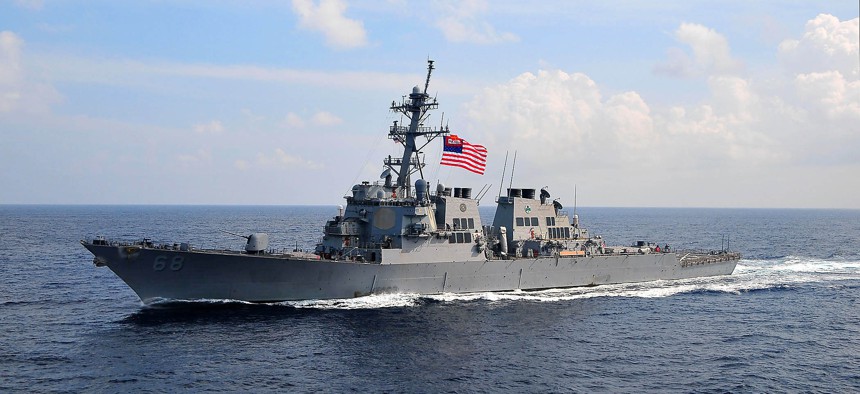Navy CANES to protect sailor IT, satcom tech on ships
As the Navy integrates CANES technology across the fleet, the service increases connections and security among nodes on the network.
The Navy is taking technical steps to expand and cyber harden its growing combat communications network, which is engineered to connect sailors' IT systems, satcom connections and computers from ship to shore, ship to submarine and ship to ship.
The Navy’s Consolidated Afloat Networks and Enterprise Services (CANES) could be expanded to include the service's Littoral Combat Ship, service officials said.
The technology is being is now being installed and cyber-hardened on carriers, amphibious assault ships, destroyers and submarines, and the service has completed 50 CANES systems and has 12 more in production, said Capt. Kurt Rothenhaus, CANES program manger.
CANES is designed to seamlessly network ships, submarines, shore locations and other tactical nodes in a maritime environment.
Also, the service is in the early phases of considering the technology for its littoral combat ships.
Rothenhaus said increasing cybersecurity, mission scope and overall resiliency on the CANES networks depends on using a common engineering approach with routers, satcom networks, servers and computing functions.
The plan is to allow ship networks to optimize functions in a high-risk or contested combat scenario by configuring them to quickly integrate new patches and changes to defend the network.
“This dramatically improves the number of controls we can implement to cyber harden the system. This allows us to be more agile and responsive as new threats emerge,” Rothenhaus said.
Nodes on CANES communicate use an automated digital networking system, or ADNS, which allows the system to connect with satcom assets using multiband terminals.
“ADNS allows communications to flex to adjust to changing battlefield requirements and prioritize traffic,” he said.
CANES is able to gather and securely transmit data from various domains and enclaves, including secret and unclassified networks, Rothenhaus explained.
“We provide the computing and storage connection from the individual work stations to servers, routers
NEXT STORY: Air Force to finalize new cyber mission forces




